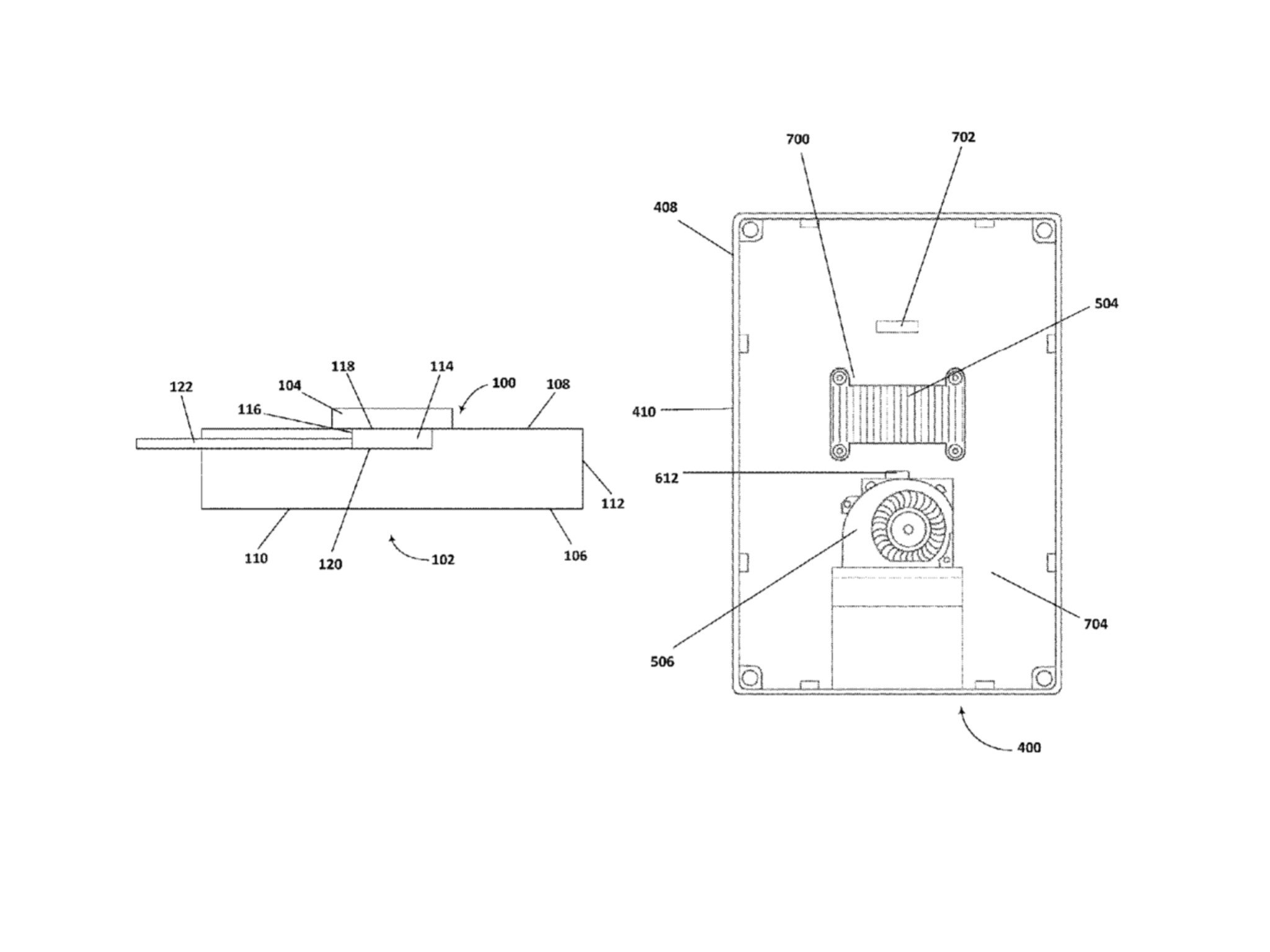Microsoft patents a cooling dock to keep devices from overheating
A patent shows off a cooling dock that could keep your devices cool.

What you need to know
- Microsoft patented the idea of a cooling dock to keep computing devices from overheating.
- The dock would use a heat sink and fans to keep a device cool.
- As with all patents, this idea might never become a real device.
A patent from Microsoft for a cooling dock for computing devices recently emerged online. The described device combines fans and a heat sink to keep devices cool. Microsoft filed for Patent No. US 10,649,506 B2 on July 17, 2019 and it was published on May 12, 2020. WindowsUnited spotted the patent earlier this week.
The concept of the dock is fairly straightforward. A device, potentially such as a Surface 2-in-1, would have magnets that would help it attach to the dock. The heat from the device would then dissipate through a heat sink that's also cooled with a fan or fans. While devices have gotten thinner and more powerful over the years, they can still easily heat up. Having a cooling dock could help keep temperatures down and devices running quickly.

Here's a description of the cooling dock idea from Microsoft's patent:
Disclosed herein are apparatuses, systems, and methods for improved heat dissipation from an electronic device. The improved heat dissipation within the electronic device may be provided by a thermal dock including an active cooling device (e.g., a Peltier device) that is physically connected (e.g., at a hot side of the Peltier device) to a spring-loaded heat sink. Magnets located on a computing device (e.g., a back side of a computing device, opposite a display of the computing device) to be cooled and the thermal dock, respectively, keep the back side of the computing device in physical contact with the Peltier device. The thermal dock also includes one or more fans positioned in line with the heat sink to cool the heat sink and thus the hot side of the Peltier device physically connected with the heat sink.
Just as with all patents, this device or concept might never see the light of day. Microsoft and other companies file many patents that don't turn into commercially available devices. If it did become a real device, would you want to use it? Let us know in the comments below.
All the latest news, reviews, and guides for Windows and Xbox diehards.

Sean Endicott is a tech journalist at Windows Central, specializing in Windows, Microsoft software, AI, and PCs. He's covered major launches, from Windows 10 and 11 to the rise of AI tools like ChatGPT. Sean's journey began with the Lumia 930, leading to strong ties with app developers. Outside writing, he coaches American football, utilizing Microsoft services to manage his team. He studied broadcast journalism at Nottingham Trent University and is active on X @SeanEndicott_ and Threads @sean_endicott_.
